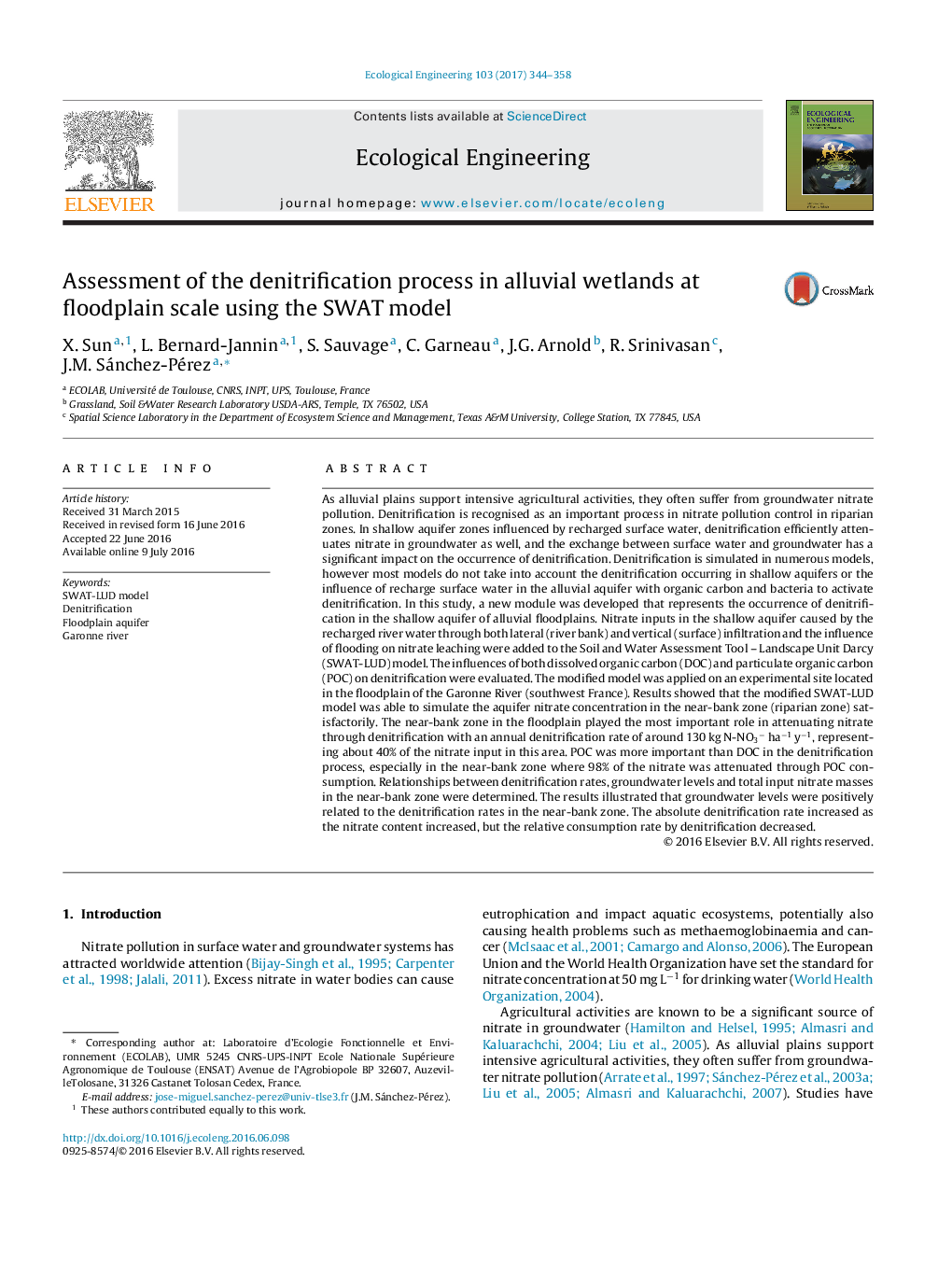| Article ID | Journal | Published Year | Pages | File Type |
|---|---|---|---|---|
| 5743890 | Ecological Engineering | 2017 | 15 Pages |
â¢A new shallow aquifer denitrification module was added to the SWAT model.â¢Influence of lateral and overbank river water infiltration considered in the model.â¢Around 40% of the nitrate input to the near bank zone was denitrified.â¢Quantification of the nitrate dynamic in the floodplain at landscape scale.â¢POC controlled denitrification rate in the shallow aquifer in the near bank zone.
As alluvial plains support intensive agricultural activities, they often suffer from groundwater nitrate pollution. Denitrification is recognised as an important process in nitrate pollution control in riparian zones. In shallow aquifer zones influenced by recharged surface water, denitrification efficiently attenuates nitrate in groundwater as well, and the exchange between surface water and groundwater has a significant impact on the occurrence of denitrification. Denitrification is simulated in numerous models, however most models do not take into account the denitrification occurring in shallow aquifers or the influence of recharge surface water in the alluvial aquifer with organic carbon and bacteria to activate denitrification. In this study, a new module was developed that represents the occurrence of denitrification in the shallow aquifer of alluvial floodplains. Nitrate inputs in the shallow aquifer caused by the recharged river water through both lateral (river bank) and vertical (surface) infiltration and the influence of flooding on nitrate leaching were added to the Soil and Water Assessment Tool - Landscape Unit Darcy (SWAT-LUD) model. The influences of both dissolved organic carbon (DOC) and particulate organic carbon (POC) on denitrification were evaluated. The modified model was applied on an experimental site located in the floodplain of the Garonne River (southwest France). Results showed that the modified SWAT-LUD model was able to simulate the aquifer nitrate concentration in the near-bank zone (riparian zone) satisfactorily. The near-bank zone in the floodplain played the most important role in attenuating nitrate through denitrification with an annual denitrification rate of around 130 kg N-NO3â haâ1 yâ1, representing about 40% of the nitrate input in this area. POC was more important than DOC in the denitrification process, especially in the near-bank zone where 98% of the nitrate was attenuated through POC consumption. Relationships between denitrification rates, groundwater levels and total input nitrate masses in the near-bank zone were determined. The results illustrated that groundwater levels were positively related to the denitrification rates in the near-bank zone. The absolute denitrification rate increased as the nitrate content increased, but the relative consumption rate by denitrification decreased.
